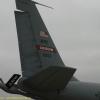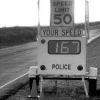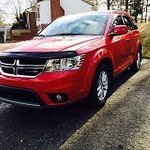
bfurth
-
Posts
531 -
Joined
-
Last visited
-
Days Won
40
Reputation Activity
-
 bfurth got a reaction from dhh3 in Uconnect phone audio issues
bfurth got a reaction from dhh3 in Uconnect phone audio issues
I hadn't made a call to them the first time it happened because A) I'm in IT, and I don't believe a problem exists until it happens again, and B) I couldn't duplicate it the first time. Second time it happens? Problem exists (can't pinpoint the cause) and is audible on both sides of the conversation with multiple phones using different operating systems - ie, problem is isolated to the vehicle. The radio sounded fine on it's own (I didn't check Bluetooth audio, but I probably should have).
And after closer inspection of my tailgate, the left side has a narrower gap than the right side. It's definitely mis-aligned somewhere. That makes the solution relatively simple.
-
 bfurth got a reaction from dhh3 in Uconnect phone audio issues
bfurth got a reaction from dhh3 in Uconnect phone audio issues
About a week ago, my 4.3S radio started acting up with my phone (Galaxy S7). The audio during calls (from the time the phone starts ringing through hanging up) would sound distorted. Think about what audio sounds like when your computer freezes and you'll get the idea of what it sounds like - choppy, broken, and garbled. I parked, turned off the engine, and let it sit for a minute, then restarted. Everything seemed ok.
It happened again this morning. I also swapped connected phones (used an iPhone 6s) and got the same issue, even after restarting the motor. In addition to this, it seems to have developed a desire to automatically transfer calls to my phone instead of keeping them at the radio for incoming calls.
I called my dealership and was able to reproduce the issue while I was on the phone with the service manager (who agreed that it sounded awful on his end), so that shouldn't require any further convincing.
I have it scheduled for service on Tuesday. Hopefully it just needs a replacement Bluetooth module - I'd hate to have to get the entire radio replaced since it will take longer to get that back.
While they're at it, they need to take care of the ABS wiring harness recall and the tailgate/bumper paint rubbing issue (somehow, the bumper/tailgate seems mis-aligned, even though the gaps on each side appear identical - net result is some rubbing/scratching under the tailgate door on the bumper that is only visible when the tailgate is open). At least all those parts are plastic!
-
 bfurth got a reaction from BrianS in Engine oil leak?
bfurth got a reaction from BrianS in Engine oil leak?
I'm also on a Mopar minivan forum. The 3.6 has been in use in the GC/T&C platform since 2011 as well, and no one is complaining about anything beyond the 2011 head issues and, more recently, the difficulty of changing out spark plugs. Past that, the 3.6 appears to be a rock solid engine.
-
 bfurth got a reaction from rolly in Engine oil leak?
bfurth got a reaction from rolly in Engine oil leak?
I'm also on a Mopar minivan forum. The 3.6 has been in use in the GC/T&C platform since 2011 as well, and no one is complaining about anything beyond the 2011 head issues and, more recently, the difficulty of changing out spark plugs. Past that, the 3.6 appears to be a rock solid engine.
-
 bfurth got a reaction from dhh3 in Engine oil leak?
bfurth got a reaction from dhh3 in Engine oil leak?
I'm also on a Mopar minivan forum. The 3.6 has been in use in the GC/T&C platform since 2011 as well, and no one is complaining about anything beyond the 2011 head issues and, more recently, the difficulty of changing out spark plugs. Past that, the 3.6 appears to be a rock solid engine.
-
 bfurth got a reaction from jkeaton in Engine oil leak?
bfurth got a reaction from jkeaton in Engine oil leak?
I'm also on a Mopar minivan forum. The 3.6 has been in use in the GC/T&C platform since 2011 as well, and no one is complaining about anything beyond the 2011 head issues and, more recently, the difficulty of changing out spark plugs. Past that, the 3.6 appears to be a rock solid engine.
-
 bfurth got a reaction from dhh3 in Whats my DJ trying to tell me?
bfurth got a reaction from dhh3 in Whats my DJ trying to tell me?
Your last post nailed it - when you lock the doors while you are still sitting in it, the horn will sound three times indicating that it thinks the key is still inside.
The doors should also unlock as that happens. It's all to ensure you don't lock your keys inside.
-
 bfurth got a reaction from dhh3 in Greetings from the Ozarks
bfurth got a reaction from dhh3 in Greetings from the Ozarks
Welcome to the board!
2015 SXT with 27k miles on it = former rental (not necessarily anything wrong with that). The good thing is that the Pentastar engine doesn't require a whole lot of maintenance before 100k - just change the oil.
Check your air filters (engine and cabin) and replace as necessary. Check tread depth on tires and rotate/replace if needed. Past that, there shouldn't be anything you need to do for a while.
-
 bfurth got a reaction from dhh3 in installing car seats?
bfurth got a reaction from dhh3 in installing car seats?
Locking seatbelts are on the outboard passenger seats (front passenger, second row left and right passengers, third row passengers.) It is not available for the driver (as the installation of one would be a safety issue) and it doesn't exist in the second row middle seat.
To activate them, pull the seatbelt all the way out. It will click, and then click repeatedly as you let it back in. Only when it retracts to a certain point will the locking mechanism release.
To install a car seat using the ALR belts, position the seat first, route the seat belt through the seat, and insert the belt into the latch for that seat. Then, fully extend the belt and release it, allowing the retractor to catch. Tighten the belt as necessary.
For the middle seat, use the latch plate per the instructions of the seat manufacturer.
LATCH anchors are substantially easier to work with. Keep in mind the weight restrictions of the vehicle (LATCH is usually about 65 pounds or so, but the exact amount is in the manual) for using LATCH anchors, and remember that this is the combined weight of the child and the seat.
-
 bfurth got a reaction from jkeaton in installing car seats?
bfurth got a reaction from jkeaton in installing car seats?
Locking seatbelts are on the outboard passenger seats (front passenger, second row left and right passengers, third row passengers.) It is not available for the driver (as the installation of one would be a safety issue) and it doesn't exist in the second row middle seat.
To activate them, pull the seatbelt all the way out. It will click, and then click repeatedly as you let it back in. Only when it retracts to a certain point will the locking mechanism release.
To install a car seat using the ALR belts, position the seat first, route the seat belt through the seat, and insert the belt into the latch for that seat. Then, fully extend the belt and release it, allowing the retractor to catch. Tighten the belt as necessary.
For the middle seat, use the latch plate per the instructions of the seat manufacturer.
LATCH anchors are substantially easier to work with. Keep in mind the weight restrictions of the vehicle (LATCH is usually about 65 pounds or so, but the exact amount is in the manual) for using LATCH anchors, and remember that this is the combined weight of the child and the seat.
-
 bfurth got a reaction from dhh3 in Door pillar scuzz/build up
bfurth got a reaction from dhh3 in Door pillar scuzz/build up
That tape is textured (slightly). Yes, it is fingerprints/oil from your hand. Yes, it will look better if you clean the whole thing at once.
Be careful with those magic erasers - they are an abrasive cleaning material.
-
 bfurth got a reaction from dhh3 in Coolant reservoir
bfurth got a reaction from dhh3 in Coolant reservoir
Chrysler cut quite a few corners across all vehicles up through the 2010 model year. Vehicles manufactured after 2011 (or had mid-generation refresh in 2011 or later) have been of MUCH higher quality. Compare the inside of a 2009/2010 Journey with a 2015. Compare the engine offerings for the Grand Caravan/Town and Country from 2008-2010 with 2011 and later.
Fiat, and the lead up to the takeover, has been VERY good for Chrysler. It should have happened without the cash of the US federal government, but that's a discussion for another day.
-
 bfurth got a reaction from dhh3 in 2012 Dodge Journey Computer Issue
bfurth got a reaction from dhh3 in 2012 Dodge Journey Computer Issue
The powertrain warranty is 5 years/100k miles, and it transfers to subsequent owners. This sounds more like it mivht end up being a TIPM problem. I have a bad feeling about that cable you unplugged.
-

-
 bfurth got a reaction from dhh3 in FWD to AWD
bfurth got a reaction from dhh3 in FWD to AWD
Come on man, put a NSFW label on that!
Would the rear wheel bearings need to be changed as well? Most FWD vehicles I've owned did not have a means of attaching a drive axle into the hub for the rear wheels.
-
 bfurth got a reaction from dhh3 in Engine shutting off while in operation
bfurth got a reaction from dhh3 in Engine shutting off while in operation
The 2009/2010 Journey (and a few other Chrysler vehicles) had an NHTSA mandated recall regarding the FOBIK keys and WIN (wireless ignition) module. The physical mechanism that holds those FOBIKs in the WIN socket were not physically strong enough to keep the key from turning from RUN to ACC under certain circumstances.
Starting in 2011, all Dodge Journey vehicles were sold standard with Keyless Enter-N-Go. Any ignition issues once the vehicle is in operation is something completely separate from that recall.
-
 bfurth got a reaction from dhh3 in smell towing uphill
bfurth got a reaction from dhh3 in smell towing uphill
With a V6, you also have the 6-speed transmission. Owner's manual suggests that you can keep the transmission in drive, but frequent shifting is likely in hilly areas or with load changes (wind, acceleration, etc.) Set the transmission to the 5 range to reduce gear hunting (and prolong the life of the transmission).
-
 bfurth got a reaction from jkeaton in smell towing uphill
bfurth got a reaction from jkeaton in smell towing uphill
With a V6, you also have the 6-speed transmission. Owner's manual suggests that you can keep the transmission in drive, but frequent shifting is likely in hilly areas or with load changes (wind, acceleration, etc.) Set the transmission to the 5 range to reduce gear hunting (and prolong the life of the transmission).
-
 bfurth got a reaction from dhh3 in Are motor mounts part of the powertrain warrenty?
bfurth got a reaction from dhh3 in Are motor mounts part of the powertrain warrenty?
Typically, no, they aren't covered. The powertrain warranty covers the case and everything (more or less) inside of it. It does not cover the components which hold it to the vehicle.
-
 bfurth got a reaction from jkeaton in Are motor mounts part of the powertrain warrenty?
bfurth got a reaction from jkeaton in Are motor mounts part of the powertrain warrenty?
Typically, no, they aren't covered. The powertrain warranty covers the case and everything (more or less) inside of it. It does not cover the components which hold it to the vehicle.
-
 bfurth got a reaction from BlindSquirrel in rotated my tire today
bfurth got a reaction from BlindSquirrel in rotated my tire today
The idea behind putting the newer tires on the back instead of the front (if you are replacing a pair of tires out of sync) is that it is easier to correct for understeer than oversteer. You have ZERO control over the rear wheels in a FWD vehicle. You have both steering angle and brakes/throttle to control the front wheels. If you have the deeper tread on the front wheels and you lose traction on the front wheels, the back wheels were already out of control. There are plenty of videos detailing this.
FWD vehicles usually have a tire rotation pattern of front straight to back, back cross to front (such has been my experience with FWD vehicles). The exception to this is if you have directional tires (think Goodyear Assurance tires with triple tread - the type that has the large V-pattern groove). Those types of tires are designed to channel water away from the center of the wheel (the point of the V hits the ground first, forcing water into the channels and away from the tire). If you put them on backwards, it will reduce traction, potentially causing hydroplaning. In that case, you rotate straight front to back, no crossing (unless you have the option of remounting and balancing tires at home, but that will probably reduce tire life by added wear on the sidewall, not to mention a higher chance of damaging your rims every 6-12 months).
-
 bfurth got a reaction from OlDirty in rotated my tire today
bfurth got a reaction from OlDirty in rotated my tire today
The idea behind putting the newer tires on the back instead of the front (if you are replacing a pair of tires out of sync) is that it is easier to correct for understeer than oversteer. You have ZERO control over the rear wheels in a FWD vehicle. You have both steering angle and brakes/throttle to control the front wheels. If you have the deeper tread on the front wheels and you lose traction on the front wheels, the back wheels were already out of control. There are plenty of videos detailing this.
FWD vehicles usually have a tire rotation pattern of front straight to back, back cross to front (such has been my experience with FWD vehicles). The exception to this is if you have directional tires (think Goodyear Assurance tires with triple tread - the type that has the large V-pattern groove). Those types of tires are designed to channel water away from the center of the wheel (the point of the V hits the ground first, forcing water into the channels and away from the tire). If you put them on backwards, it will reduce traction, potentially causing hydroplaning. In that case, you rotate straight front to back, no crossing (unless you have the option of remounting and balancing tires at home, but that will probably reduce tire life by added wear on the sidewall, not to mention a higher chance of damaging your rims every 6-12 months).
-
 bfurth got a reaction from jkeaton in rotated my tire today
bfurth got a reaction from jkeaton in rotated my tire today
The idea behind putting the newer tires on the back instead of the front (if you are replacing a pair of tires out of sync) is that it is easier to correct for understeer than oversteer. You have ZERO control over the rear wheels in a FWD vehicle. You have both steering angle and brakes/throttle to control the front wheels. If you have the deeper tread on the front wheels and you lose traction on the front wheels, the back wheels were already out of control. There are plenty of videos detailing this.
FWD vehicles usually have a tire rotation pattern of front straight to back, back cross to front (such has been my experience with FWD vehicles). The exception to this is if you have directional tires (think Goodyear Assurance tires with triple tread - the type that has the large V-pattern groove). Those types of tires are designed to channel water away from the center of the wheel (the point of the V hits the ground first, forcing water into the channels and away from the tire). If you put them on backwards, it will reduce traction, potentially causing hydroplaning. In that case, you rotate straight front to back, no crossing (unless you have the option of remounting and balancing tires at home, but that will probably reduce tire life by added wear on the sidewall, not to mention a higher chance of damaging your rims every 6-12 months).
-
 bfurth got a reaction from dhh3 in Brake on floor
bfurth got a reaction from dhh3 in Brake on floor
ABS bleed procedure ought to be:
Bleed brakes per usual procedure.
Computer-actuated bleed of ABS module using scan tool.
Bleed brakes again to clear hydraulic lines of air.
This is the order for a T&C/Grand Caravan, and they share almost the entire brake system.
I replaced the calipers in my T&C (2010) on all four corners and didn't have to do anything more than a typical brake bleed (ABS module wasn't involved, so an ABS bleed wasn't required).
I would be hesitant with a thinner rotor on the 2009 - thin rotors + 4,500 pound vehicles with already smaller pads and rotors = asking for trouble. That being said, a thinner rotor would only increase the amount of fluid necessary to get the caliper to press in on it (to a point). Once the pads are set, you'd would be fine (unless the rotors are paper thin, and then you have other problems).
I agree with the sentiment that someone missed something somewhere - I've never had a brake pedal go to the floor that wasn't dealing with air in the lines (and I have yet to experience a leaking brake line). The bleed order does matter.
Pliers on the flexible piece of the brake line (that connects directly to the calipers) would isolate the issue. If they pinched off the brake hoses near the calipers on all four wheels and got proper resistance against the pedal, that narrows down your issue real quick - it's 1 or more caliper causing the problem. Proper isolation troubleshooting at that point would be to remove one clamp at a time until the problem re-appears. That implies a defective caliper and it should be replaced. And then bled properly.
-
 bfurth got a reaction from dhh3 in Car resets while driving at 70MPH, then transmission fixed at 2nd gear !!!
bfurth got a reaction from dhh3 in Car resets while driving at 70MPH, then transmission fixed at 2nd gear !!!
Have you had the R03 (WIN module) recall completed yet?





